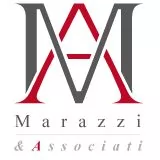The blockchain technology
The blockchain (or Distributed Ledger Technology) has been one of the most discussed technological advancements in recent years, as well as its applications in financial services and other fields: it is a distributed (and open) database, structured in "nodes" or "blocks", containing transactions records, with which users can interface through dedicated applications. To be consolidated within a block, each piece of data, and subsequently each block before being inserted into the "chain", undergoes a validation process.
The main characteristics of this system is that every operation is traceable, and that there is, now, no regulation, authority or central entity recognized by the users, who therefore carry out transactions autonomously and directly among themselves. A cryptographic encryption process ensures that any potential human influence is eliminated and that the recorded transactions are kept confidential.
Smart contracts
In Italy, both DLTs and smart contracts have been introduced in the Decree Law N. 135 of December 14, 2018, converted by Law N. 12 of February 11, 2019, which provides a legal definition. They are described as softwares used for contractual relations, to automate the execution of certain contractual obligations encoded in computer language, on the realization of predetermined conditions, meaning that they are based on the binomial scheme "if/then" (Article 8-ter, subsection 2, Decree Law N. 135). The smart contract must be in written form and satisfy the requirements of validation of the identities of the parties involved (guidelines about digital identity should have been developed by the Agency for Digital Italy, 90 days after the introduction of the Law). In the European Union, only Malta (who put them in the "Innovative Technology Arrangement" category), and Italy have recognized the legal status of such innovative instruments, referring directly to the use of blockchain technology.
In the United States, Tennessee, in 2018 (Senate Bill No. 1662), has provided definitions for DLTs and smart contracts, clarifying that the latter are executed on an electronic ledger and must be considered valid, because "it is not possible to deny legal effectiveness to a contract solely because it is executed via a smart contract".
Blockchain and smart contracts
Apparently, smart contracts are not linked to the blockchain technology. However, the latter could supply the instruments to develop innovative and decentralized contracts, thanks to its fundamental features (automation, transparency, and security). Ethereum is just one of the many platforms that might help to automate the execution of contractual obligations, which are more transparent compared to traditional contractual mechanisms, besides being visible to all network participants and not just to the contractual parties. In addition, the recorded transactions are not modifiable or erasable, and this increases the degree of certainty and stability of the smart contracts.
They have already been applied to some concrete cases, such as parametric insurance policies, where the payments are automatically made when the risk set by the smart contract occurs. A good example are policies based on the Ethereum platform made by Etherisc, an air travel insurance company: the application programming interfaces provide information on departure times of flights guaranteed by the policy and, when there is a delay, the smart contract automatically triggers the reimbursement to the insured party.
Currently, the financial sector is where smart contracts are spread the most, for token issuance or cryptocurrency exchanges, and they are used to record transactions that involve assets' ownership without financial intermediation (so, efficiently requiring less time and overhead costs).
Some attempts are also being carried out to use smart contracts for the settlement of claims during mergers and acquisitions operations, to reduce the time needed to obtain the assets deposited as collateral through an automated escrow agreement. Also, M&A transactions are characterized by the participation of lawyers, external advisors and auditors that lengthen the process and increase costs: SMEs, who often lack resources, may benefit from using blockchain and artificial intelligence, that could help them with the identification of suitable targets, with the due diligence and the post-merger activities. According to Statista, more than 60% of managers used digital M&A technologies for corporate development activities in 2018.
Pros and cons
Blockchain seems to be an ideal structure since it is based on a mechanism that does not require human approval and control at every step, and institutions and/or intermediaries are not needed in the process. Potentially, the only third party to intervene could be the programmer or service provider who transposes the natural language into computer language, ensuring the parties' independence from other intermediaries such as notaries or banks.
Another issue that is worth highlighting is that only specific sections can be conditioned and automated, because not all contractual clauses can be defined as "if/then" schemes, so a smart contract would find best application as part of a more complex deal. Theoretically, through them it is possible to regulate agreements such as rentals or business collaborations, to register intellectual property works, or to record warranties and surety bonds: in short, agreements with a low rate of complexity and a high level of standardization.
The role of the lawyer becomes that of defining the contract correctly and in a simple way, easily transposable into computer language, so that the finished smart contract can guarantee a high level of reliability and security, eliminating interpretation errors, as well as those of document loss, being totally on-line. In conclusion, the blockchain technology could be useful for many aspects of the legal profession, by speeding up processes and lowering their costs, although the fact remains that smart contracts are still (until a more precise regulation will be created) inevitably subject to technical and legal limitations.
The content of this article is intended to provide a general guide to the subject matter. Specialist advice should be sought about your specific circumstances.

